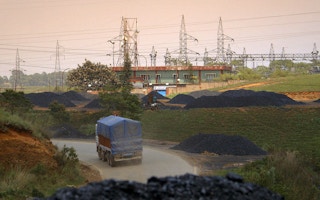More than a year after the flooding of an illegal coal mine killed 15 miners in Meghalaya, the collective failure of all disaster management agencies in India has been almost forgotten.
On December 13, 2018, 20 miners were trapped in a mine in Ksan, in the north-east Indian state of Meghalaya. Five managed to escape. Rescue efforts for the remaining 15 continued for months, but failed.
The miners were trapped at a depth of around 370 feet (112 metres) in the Jaintia Hills district. Service personnel from the National Disaster Response Force (NDRF) and the State Disaster Response Force began operations shortly after the miners were trapped. After a request for assistance from the district administration, teams from Coal India, Kirloskar Brothers, the Indian Air Force and the Indian Navy joined the rescue effort.
The accident happened despite the fact that the National Green Tribunal (NGT) had banned mining in Meghalaya — particularly ‘rat-hole’ mining which is a primitive and hazardous method of mining for coal, with tunnels that are only 3-4 feet in diameter.
The NGT and anti-mining activists have pointed out that illegal mining of coal continues.
While two activists were conducting their investigations a few months ago, a group of people encircled their car and attacked them. Both were hospitalised with critical injuries, and local media reported that the attack pointed towards a coal mafia.
Coal mining in Meghalaya can no longer persist with its dangerous legacy. It is essential for India to set this right before we wake up to another disaster. The attacks on activists indicate that the process of setting it right will involve more than cosmetic changes.
A look at the Supreme Court case on coal block allocation (WP Civil 120 of 2012) and the subsequent amendments in 2012 of the Coal Mines Nationalisation (CMN) Act and the Coal Mines Special Provisions Act 2015 as well as subsequent meetings in the Ministry of Coal indicate that the coal mining in Meghalaya is entirely illegal.
The key points of the judgement were:
- The allocation of coal blocks through government dispensation route, however laudable the object may be, also is illegal since it is impermissible as per the scheme of the CMN Act. No state government or public sector undertakings of the state governments are eligible for mining coal for commercial use. Since allocation of coal is permissible only to those categories under Section 3(3) and (4), the joint venture arrangement with ineligible firms is also impermissible…
- The grant of reconnaissance permit or prospecting licence or mining lease in respect of an area containing coal or lignite can be made only through selection through auction by competitive bidding even among the eligible entities.
India’s coal ministry and the Meghalaya state government do understand this. The issue has been taken up in various meetings. In January 2017, a meeting was held in which ways to enable mining under the existing laws were discussed.
It was concluded that the only viable option under the existing statutes will be for a state-owned corporation to do the mining. In August 2017, the coal ministry accepted the state government’s submission that the Meghalaya Mineral Development Corporation will be the designated agency for mining coal and would be allocated the permission to mine if an appropriate proposal was made.
This has not happened yet. Till then, any and every coal transaction in Meghalaya – including mining – is patently illegal. The moot question is: who will set it right?
This story was published with permission from The Third Pole.










